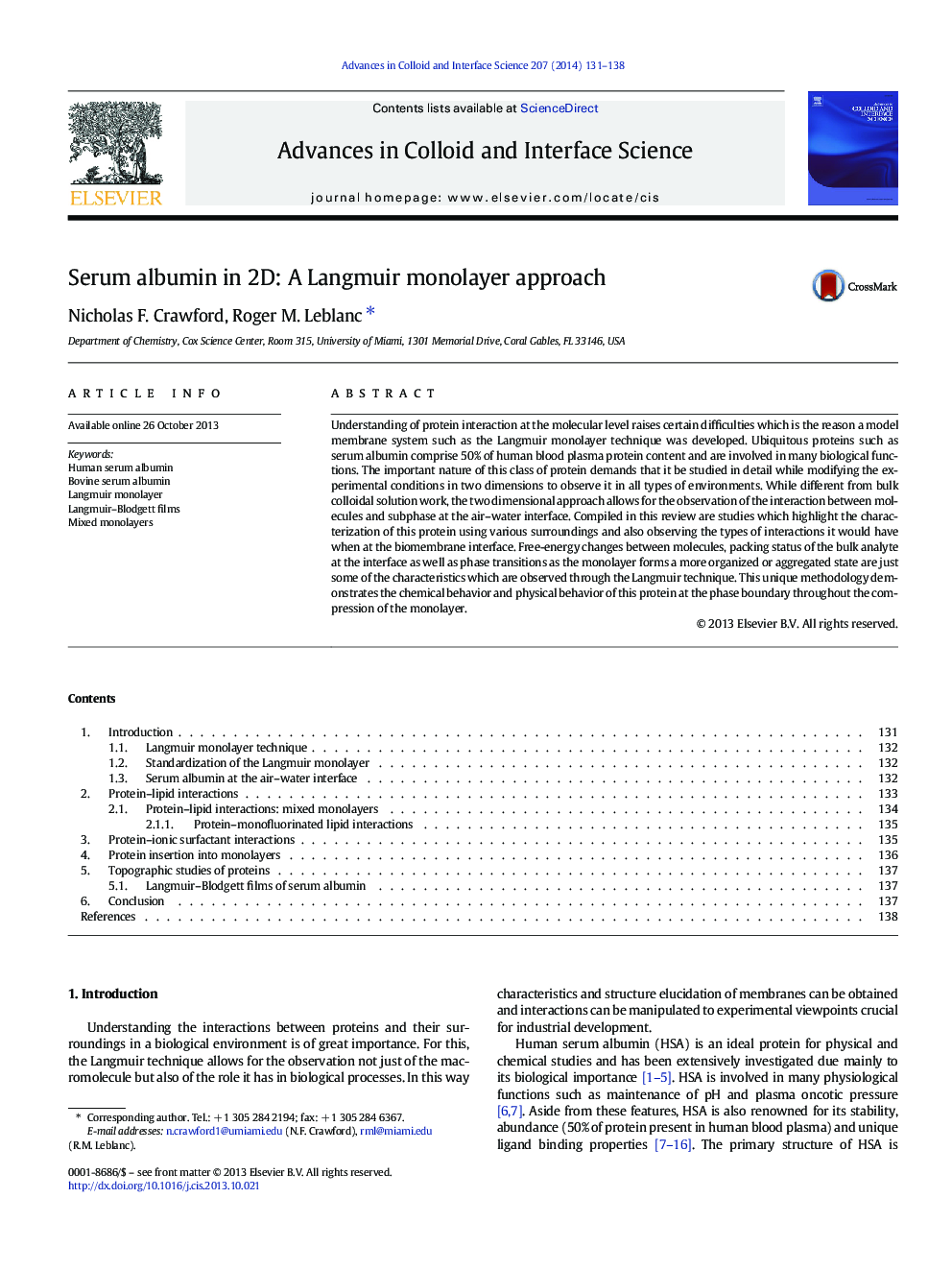| Article ID | Journal | Published Year | Pages | File Type |
|---|---|---|---|---|
| 590797 | Advances in Colloid and Interface Science | 2014 | 8 Pages |
•Human and bovine serum albumins were studied using the Langmuir monolayer technique.•Increasing ionic subphase concentrations revealed a closely packed monolayer.•Extreme pH subphases cause the protein to take on an elongated shape.•Mixed monolayers resulted in expulsion of the protein from the interface.•LB films utilized hydrophobic interactions to produce a multilayer substrate.
Understanding of protein interaction at the molecular level raises certain difficulties which is the reason a model membrane system such as the Langmuir monolayer technique was developed. Ubiquitous proteins such as serum albumin comprise 50% of human blood plasma protein content and are involved in many biological functions. The important nature of this class of protein demands that it be studied in detail while modifying the experimental conditions in two dimensions to observe it in all types of environments. While different from bulk colloidal solution work, the two dimensional approach allows for the observation of the interaction between molecules and subphase at the air–water interface. Compiled in this review are studies which highlight the characterization of this protein using various surroundings and also observing the types of interactions it would have when at the biomembrane interface. Free-energy changes between molecules, packing status of the bulk analyte at the interface as well as phase transitions as the monolayer forms a more organized or aggregated state are just some of the characteristics which are observed through the Langmuir technique. This unique methodology demonstrates the chemical behavior and physical behavior of this protein at the phase boundary throughout the compression of the monolayer.
Graphical abstractFigure optionsDownload full-size imageDownload as PowerPoint slide
